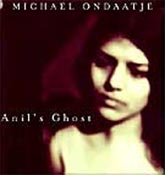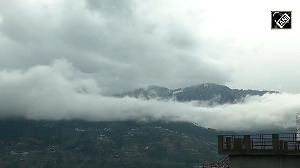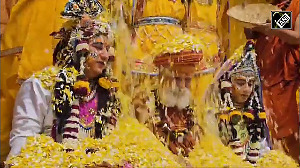It's an old, bad habit: reading books about a country or a place in that setting, but nowhere have the books whispered into my ear as insistently as in Sri Lanka.
I'm here as a tourist, but a deeply privileged one: my guides are Michael Ondaatje, Carl Muller, Shyam Selvadurai, Karen Roberts, Jean Arasayanagam and other, newer voices.
 In 2005, Sri Lanka seems caught between the need to remember its history, one that sets conflict against a backdrop of heartbreaking beauty, and the need to move beyond it.
In 2005, Sri Lanka seems caught between the need to remember its history, one that sets conflict against a backdrop of heartbreaking beauty, and the need to move beyond it.
We tourists are sealed into a hermetic bubble where only monuments, mangosteen sellers and beautiful hotels may gain admittance.
The locals are tired of being seen as victims; people discuss massacres and the tsunami, yes, but also the need to build more roads, better schools, the shopping mall boom in Colombo.
As I take to the road, it's the voices of the writers packed neatly into my suitcase who tell me the hidden, forgotten histories of Sri Lanka.
In Colombo, the harbour is booming, bustling, even at 3 am; from the hotel you can hear the ships calling out at sea, the sound of business.
In Michael Ondaatje's Anil's Ghost, it's in an abandoned passenger liner moored to a side of Colombo harbour that Anil dissects bones.
Old and new, the ancient skeletons from the graves of monks, the modern ones bearing injuries that testify to beatings, torture, deliberately broken bones; her job is to put the pieces of history back together.
It's fiction, but you would have to be incurious indeed not to look out and wonder whether all the many Anils who reconstructed Sri Lanka in a time of war came back to shore safely.
In Kandy, the peace of the town, a newlywed couple posing for photographs on the shore of a glassy, calm lake, belie another sliver of history.
The Kandy Jean Arasanayagam, captured in a short story in In The Garden Secretly, was a place where soldiers carried T-56 rifles silhouetted against the mass of golden yellow flowers of ahela trees.
"Fifteen insurgents
No bodies burn on the roads today; in Polonnaruwa, where a child was thrown into a barrel of tar to die, tourists click, snap and move on to the even more ancient Anuradhapura.
Other writers knock at the doors of memory, reminding me -- as all tourists should be reminded -- that Sri Lanka's history can't be reduced to just a list of casualties.
In Galle, a French chef does a fancy version of duck that reminds me of the turkey so lovingly described by Romesh Gunesekara in Reef; in Colombo, thick slices of cake and halwa sandwiched between banana leaves make me hungry for the lavish Burgher cooking Carl Muller wrote of in Jam Fruit Tree.
In Nuwara Eliya, the old bungalows of the British that Karen Roberts described still dangle their promise of 'an England in the hills', the names evocative, a litany of conquest and nostalgia: 'St Anne's, Abercrombie, Loolecondera, Windsor, St Coombs, and, of course, Glencairn.'
The sheltered, mannered world of the Cinnamon Gardens described by Shyam Selvadurai exists in uneasy proximity with a new world of fast cars, drugs, underworld murders, fancy shops.
But friends tell me they still have to struggle for pieces of their own history, as Selvadurai did when he battled bureaucracy and poor record-keeping in the archives, building his picture of Cinnamon Gardens from memory and scraps that had been preserved almost by accident.
In the custody of monks, the ola manuscripts fare better, the rounded letters of the Sinhala script dictated by the palm leaf's resistance to sharp, angular strokes, described by Ondaatje as 'the curve of a lover's spine'.
But my sharpest memory of Sri Lanka is not of massacres or malls, but of the scent of cinnamon. Until it hits me full blast, in a room sprayed with cinnamon oil, I never realised the full power of Ondaatje's poem, The Cinnamon Peeler.
Speaking of its spicy reek, he wrote: 'The blind would stumble certain of whom they approached/ though you might bathe/ under the rain gutters, monsoon." It took a few days after coming home to India to get the scent of cinnamon out of my head; but Ondaatje's poem is harder to dislodge.







 © 2025
© 2025